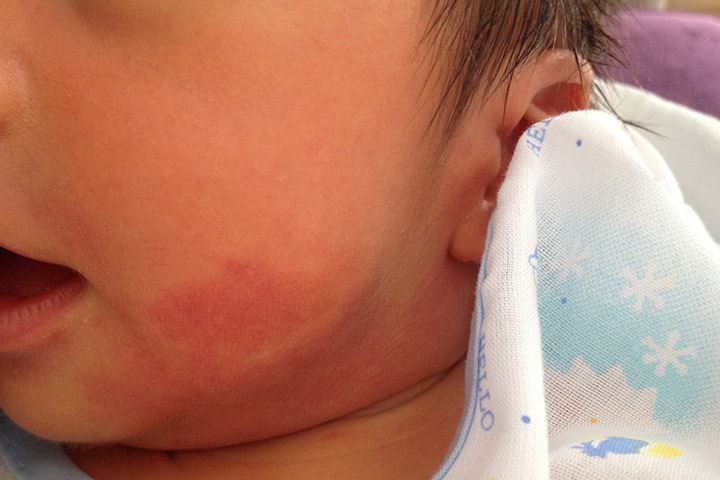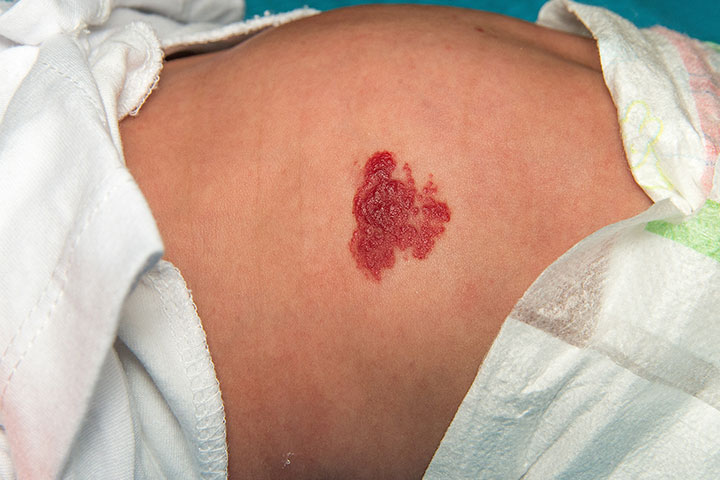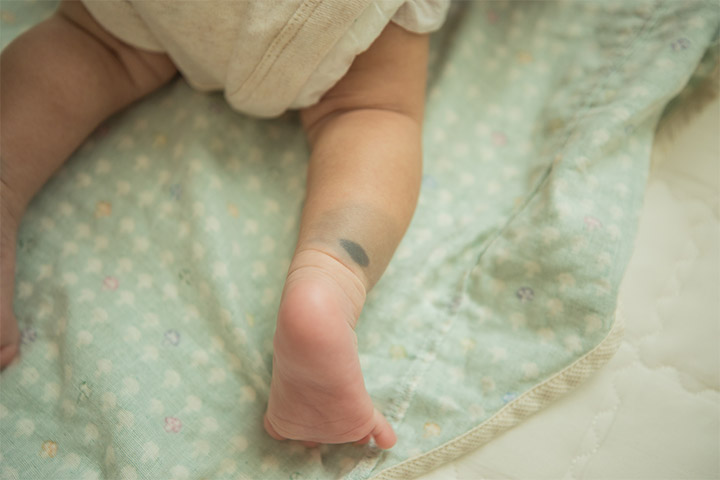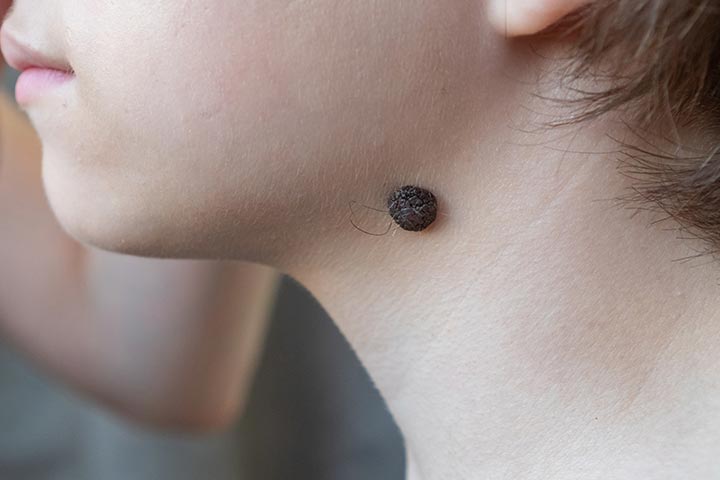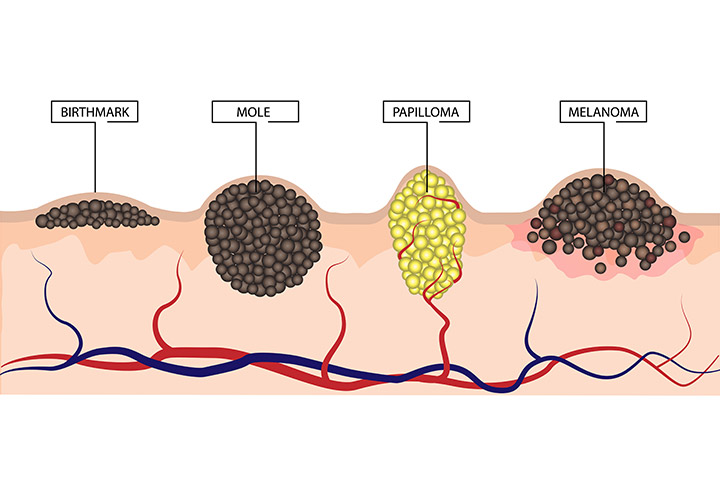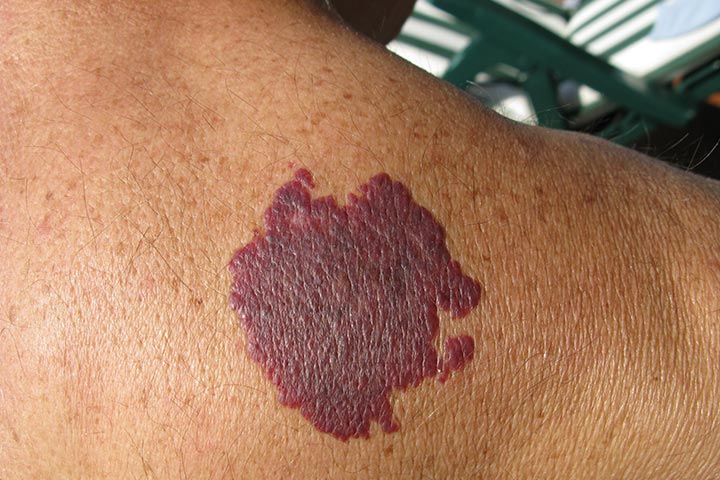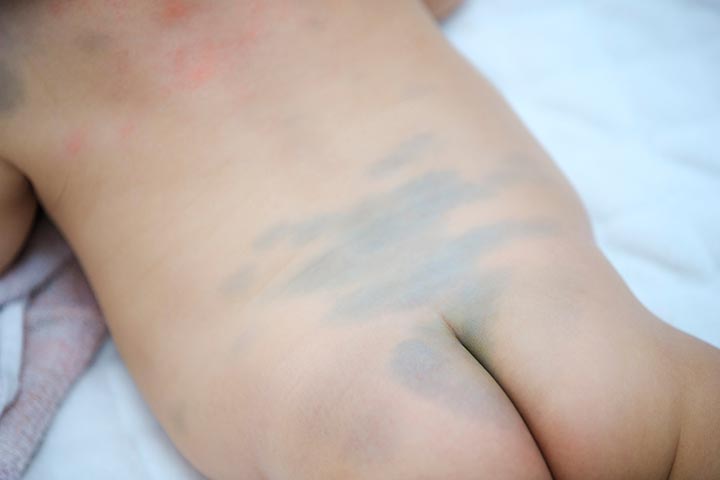
Image: Shutterstock
We all would have seen a birthmark on someone or the other. Some of us are born with a birthmark while for others, it would have become prominent a few days after birth. In fact, birthmarks are so commonplace that we would not give a second thought to it. Some of us would even forget we have one unless it is located at a prominent spot like the forehead or cheeks. However, you’ll be surprised to know that these seemingly ordinary marks have more to them than what meets the eye. For instance, did you know that for centuries people have associated certain superstitions to them? Or, that there are more types of birthmarks than you knew? Amusing, isn’t it? So, let’s discuss what that birthmark on your body means after all.
Types Of Birth Marks
There are various types of birthmarks, but they are broadly classified as a) vascular birthmarks or red marks and b) brown pigmented patches, moles and spots (1).
The vascular birthmarks are pink or strawberry-colored birthmarks; maroon port-wine stains; tiny pink spots called stork bites or salmon patches, and cavernous hemangiomas that are raised birthmarks on the skin and of reddish-blue color (2).
The other category of birthmarks includes cafe-au-lait patches, which looks like a patch of coffee mark wherever it appears.
Mongolian spots appear as dark blue-gray patches on the body. They usually appear on lower back and buttocks (3).
Certain moles are also considered as birthmarks if you are born with them.
What Scientists Say About Birthmarks
Scientists have not been able to fully understand what causes birthmarks to appear. While most of the birthmarks are inherited, not all of them are. In fact, scientists believe that vascular birthmarks occur due to abnormal blood vessels inside or under the skin.
Whereas pigmented birthmarks are a result of clusters of pigmented cells.
As for the port wine stains, it is believed that they are a result of slightly dysfunctional nerves that control the narrowing and widening of the tiny blood vessels (capillaries). Insufficiency of these nerves can also result in port-wine stains. All this simply means that either due to insufficiency or dysfunctional nerves, a particular part of the body gets comparatively more supply of blood than the rest of the skin cells. This gives that patch of skin a more reddish or purple-colored look.
However, apart from explaining the color, there is no scientific explanation to why birthmarks occur (4).
While there may be no scientific explanation to them, there are some birthmarks that might fade away with time. Like the Mongolian spots often fade and even disappear in some cases by the time the baby is 4 years old (5).
Superstitions And Myths Around Birthmarks
In the absence of any scientific explanation and the curious nature and shape of the birthmarks, many cultures have associated certain myths and superstitions with birthmarks.
In some cultures, a pregnant woman’s weird cravings are associated with the birthmarks. It is believed that if a pregnant woman craves for something particular; doesn’t get it, and ends up scratching herself, then the baby will be born with a birthmark. That birthmark can also be in the form of a beauty mark and looks exactly like the food that the mother would have craved for during pregnancy. It is believed that this legend exists in countries like Israel, Egypt, Italy, and Brazil till date.
According to an old Chinese superstition, if an expectant mother lights up a fire then she will give birth to a baby with a birthmark on the face.
An American superstition goes like this – if a pregnant woman witnesses lunar eclipse or touches her belly while watching one, then her baby will be born with a birthmark.
And, according to Indian superstition, if a soon-to-be mother draws a line anywhere during an eclipse, her baby will be born with a birthmark that will look like a line.
Now, aren’t birthmarks more fascinating than you thought? Do you have a birthmark too? What kind is it? Let us know more and tell us what you think about it.

